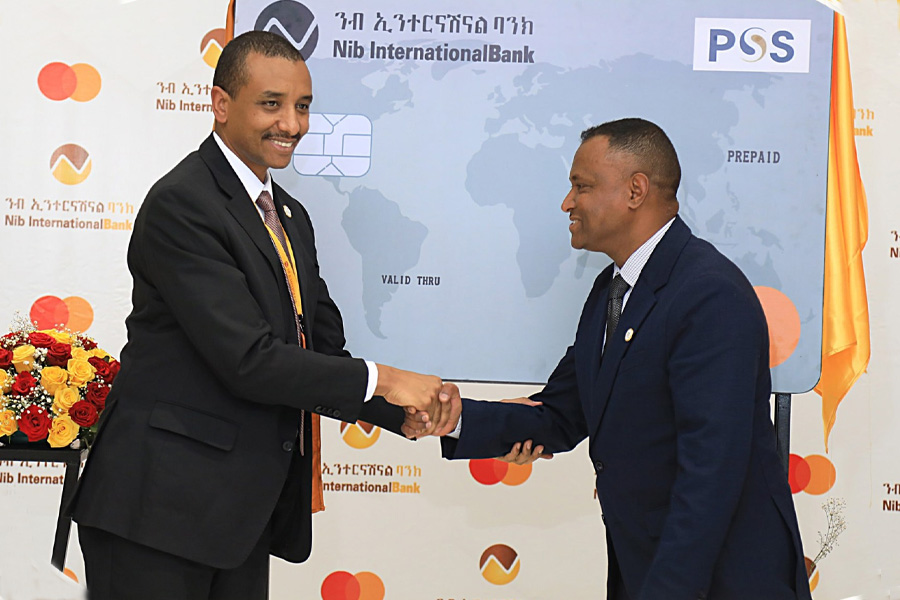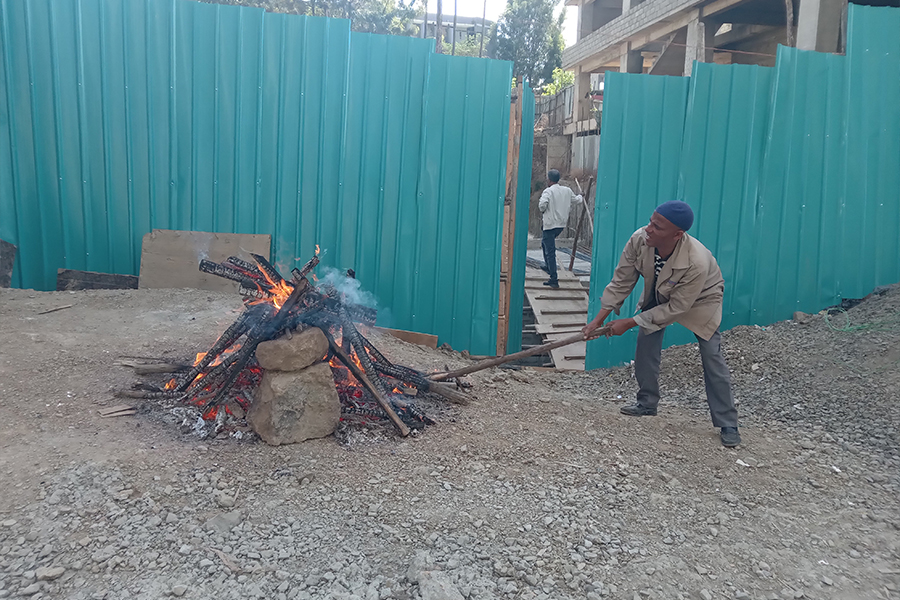
Nib International Bank's (NIB) directors and executives had a somewhat melancholy report to present to thousands of shareholders met in December 2022 at Inter Luxury Hotel, on Guinea Conakry Road, in the Casanchis area.
The Bank posted a nine percent increase in its profit, netting 1.34 billion Br from its operations in the last financial year. The profit increase came with a surge in interest and non-interest income and a substantial decrease in loss from foreign exchange dealings. A modest growth in contrast to the 65pc of average for its peers, the more than 5,000 shareholders have yet to see the profit translated to earnings per share (EPS). Nib Bank has seen its EPS steadily decline; last year's figure dropped by eight Birr to 146 Br.
"Shareholders must have been disappointed," said Abdulmenan Mohammed, a financial statement analyst based in London.
Berhanu Weldegiorgis was among the 717 founding shareholders, unhappy with Nib Bank's recent performance.
"It's a record on the low," he told Fortune. "Management should explain."
Recapitalisation, an industry-wide trend where banks struggle to meet the central bank's capital threshold, is attributed to the decline in return for shares. Nib Bank's paid-up capital has grown to 4.82 billion Br (13.1pc increase), short of 200 million Br to meet the central bank's minimum requirement.
Incorporated in 1999 with 27.6 million Br in paid-up capital, Nib International Bank's capital ratio has steadily increased over the past decade, from 12.3pc in 2010 to 15.8pc in 2020. A second-tier bank compared to the eight top-performing private banks, Nib Bank's capital adequacy ratio, a measure of banks' capital against their credit exposure, is 1.2 percentage points lower than their average 17pc.
However, its asset base has expanded considerably to 61.4 billion Br (showing a 13.4pc increase), a little over 60pc of the average for the eight top performers in the industry. But it was higher than Wegegen's 43.1 billion Br and Oromia Bank's 52 billion Br.
Neither was the growth rate in the outstanding loans and advances different from increases in capital and assets. Growing by 13.8pc, they have inched to 39 billion Br, dropping its loan-to-deposit ratio slightly by 0.3 percentage points to 78.2pc. For an industry that has seen an average of 84pc ratio, where the Bank of Abyssinia had 91pc and Dashen Bank 87pc, Nib Bank has the liquidity position to lend more.
"This is remarkable," said Abdulmenan.
Nib Bank's cash and bank balances doubled to nearly 15 billion Br, while the liquid to total assets ratio increased to 24.3pc from 13.7pc. The Bank's liquidity position improved considerably after freeing a substantial amount of cash it bought in five-year bonds. The central bank's mandatory bond investment plummeted to 365.7 million Br from 6.67 billion Br.
"Freeing up resources has helped our liquidity position," Genene Ruga, president of Nib Bank, told Fortune.
Nib Bank's earnings from interest on loans and central bank bills increased by 17.2pc to 6.13 billion Br, while income generated from commissions and fees soared to 696.9 million Br, a 42.2pc growth.
"The income from financial and non-financial intermediation activities was high," said Abdulmenan.
However, the impressive revenue growth was followed by considerable expense increases where interest on savings reached 2.5 billion Br (24.4pc increase), representing half the industry's average of the eight private commercial banks. Nib's liability of 53.3 billion Br represents over three times lower than Awash Bank and almost three times lower than Bank of Abyssinia, two of the top performers in the private banking industry, where the eight average at 92.3 billion Br.
Wages and employee benefits soared by 42.7pc to 1.77 billion Br while operating expenses went up to 780 million Br (by 9.3pc), driven by the substantial drop in foreign currency loss from 282.4 million Br to 26.9 million Br.
Woldetensai Woldegiorgis, board chairman, reminded shareholders of the pervasive foreign currency crunch to meet demand as one of the main challenges during the financial year. He conceded that Nib Bank had faced intense competition to recruit and retain human capital and deposits from existing and new clients.
Total deposits mobilisation reached 49.7 billion Br (increased by 14.3pc), slightly above half of the top performers' average and three times lower compared to Awash Bank, the largest private commercial bank in the industry.
Woldetensai blamed hiccups in service delivery during the reimplementation of the core banking solution (T-24 release 20).
The President pinned his hope, focusing on introducing new strategies and restructuring the human capital. During the operational year, Nib hired 196 new employees, bringing its labour force to 7,578. It has also expanded its coverage with 29 added branches, bringing the total number to 410, with 19 interest-free banking service outlets.
Declining to disclose the value of his shares with the Bank, Berhanu believes the senior management has to instil a sense of belonging among employees.
Aynalem Tibebu, a branch manager for the last two years, has mixed feelings about the financial year. The branch she manages in the Saris area has seen a positive year, expanding its customer base by 70pc. However, loan advances showed a 35pc rise.
It has been a challenging year for businesses across the board where borrowers' inability to service loans compelled banks to restructure and set aside large sums as provision. Nib Bank's provision of 164.4 million Br for underperforming loans could be much lower than the 429.6 million Br average for the industry's top performers. However, it represents three times larger than the 49.46 billion Br provision it had the previous year.
The Bank's President attributed the surge in non-performing loans to credits advanced by eight branches in Tigray Regional State, where civil war raged for two years since 2020.
Nonetheless, Nib Bank's 2.8pc non-performing loans (NPL) ratio remains 1.1 percentage points lower than the average for the top industry performers, where Wegegen Bank, the largest hit by the events in Tigray Regional State, sustains the highest NPL of 10.7pc.
PUBLISHED ON
Feb 18,2023 [ VOL
23 , NO
1190]

Radar | Jan 16,2024

Radar | Dec 08,2024

Fortune News | Jun 29,2025

Fortune News | Sep 26,2021

In-Picture | Mar 02,2024

Advertorials | Jul 08,2024

Fortune News | Jan 22,2022

Radar | Oct 22,2022

Radar | Nov 16,2024

In-Picture | Aug 04,2024

Dec 22 , 2024 . By TIZITA SHEWAFERAW
Charged with transforming colossal state-owned enterprises into modern and competitiv...

Aug 18 , 2024 . By AKSAH ITALO
Although predictable Yonas Zerihun's job in the ride-hailing service is not immune to...

Jul 28 , 2024 . By TIZITA SHEWAFERAW
Unhabitual, perhaps too many, Samuel Gebreyohannes, 38, used to occasionally enjoy a couple of beers at breakfast. However, he recently swit...

Jul 13 , 2024 . By AKSAH ITALO
Investors who rely on tractors, trucks, and field vehicles for commuting, transporting commodities, and f...

Jul 12 , 2025
Political leaders and their policy advisors often promise great leaps forward, yet th...

Jul 5 , 2025
Six years ago, Ethiopia was the darling of international liberal commentators. A year...

Jun 28 , 2025
Meseret Damtie, the assertive auditor general, has never been shy about naming names...

Jun 21 , 2025
A well-worn adage says, “Budget is not destiny, but it is direction.” Examining t...